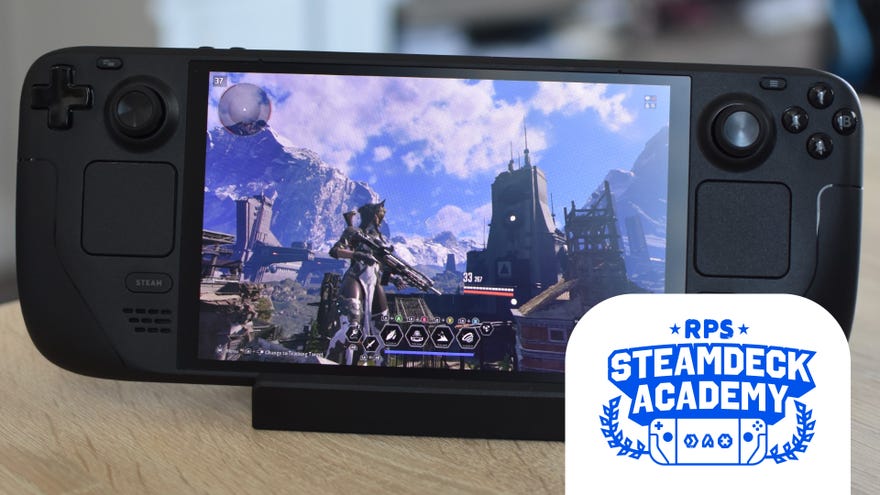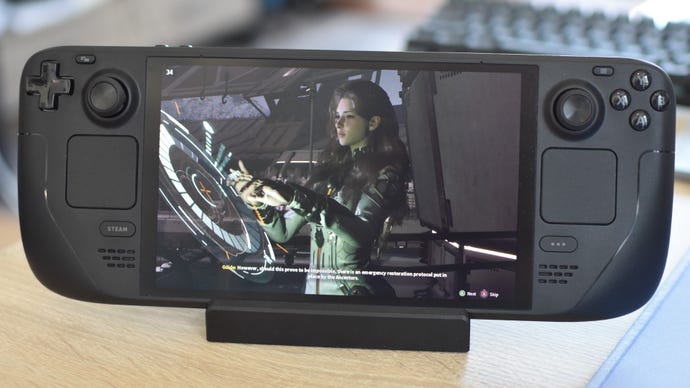HomeHardwareFeaturesThe First Descendant
The First Descendant is playable on Steam Deck, despite some temporary compatibility confusionDude, where’s my Microsoft Visual C++ Redistributable?
Dude, where’s my Microsoft Visual C++ Redistributable?
Image credit:Rock Paper Shotgun
Image credit:Rock Paper Shotgun

Image credit:Rock Paper Shotgun

Steam Deck Academybrings together all our guides and explainers on getting the most out of your Steam Deck, no student loans or sweaty dormitories required.
Besides givingThe First Descendantthe ol’benchy markson desktop, I was curious to see how this gleaming looter shooter would run on the less flexing hardware of theSteam Deck. The answer: it didn’t, at first. Luckily, a semi-quick fix was enough to get me in, where I found a game that for all itsray tracinginclinations, is comfortable with life on the Deck. Reasonably. Most of the time.
If this ever happens to you, in The First Descendant or any other game, I heartily recommendYouTuber JD Ros’ video tutorialon fixing it. The method boils down to installing the latest C++ versions via theSteam Deck’s Desktop Mode, then adding their executables to the game’s launch options. This worked a treat for me, and I didn’t suffer any further compatibility headaches from there on out.
Image credit:Rock Paper Shotgun

FSR 3 frame generationis available on top of this, and works even on the Deck’s dinky APU, upping the framerate to 40-50fps. It’s not an entirely convincing implementation, however: the input lag it adds is palpable, and even during the more 50fps-leaning bits, it still feels a tad skippy. You can tell, in other words, that the algorithm-generated frames are fake, even if they’re not clearly showing any errors in picture quality. We’ll go over The First Descendant’s actual best settings to use on the Steam Deck a few paragraphs down, but you can probably pass on the frame gen.
At the same time, you will want the ‘real’, traditionally rendered framerate to stay above 30fps as much as possible. The First Descendant is ruthless with kicking players from online games at the first sign of technical instability, which means big FPS drops risk you being booted from a mission well before getting your hands on its loot. This has happened to me on a couple of occasions, specifically on the Steam Deck, so it is vital that your settings don’t tax the APU too much. Not just for the sake of smoothness, but to appease the game’s paralysing mistrust of suboptimal performance.
That’s not ideal, clearly. But it’s also a rarity – much more often, The First Descendant feels fine on the Deck. The default controller binds, in particular, are sensible and keenly considered, managing to fit a range of sci-fi magic powers/grappling hooks/melee moves onto a small selection of buttons without demanding any inhuman finger-twisting.
Image credit:Rock Paper Shotgun

The First Descendant Steam Deck settings guide
Simply going with the Low preset might sound like the safest option, but I honestly couldn’t see a performance difference between that and the better-looking settings above. You’re still getting 30-40fps in the most demanding areas, maybe mid-forties in tight interiors.
And again, frame generation isn’t as useful as it sounds. Even if it didn’t have the slightly sluggish, paradoxically choppy feeling to it, it shouldn’t even help with the ‘instability detected’ issue, as the generated frames are slotted in outside the GPU’s normal rendering pipeline. In very untechnical terms, this means they’re largely invisible to the system, so won’t be taken into account when the game thinks your Steam Deck isn’t running fast enough.